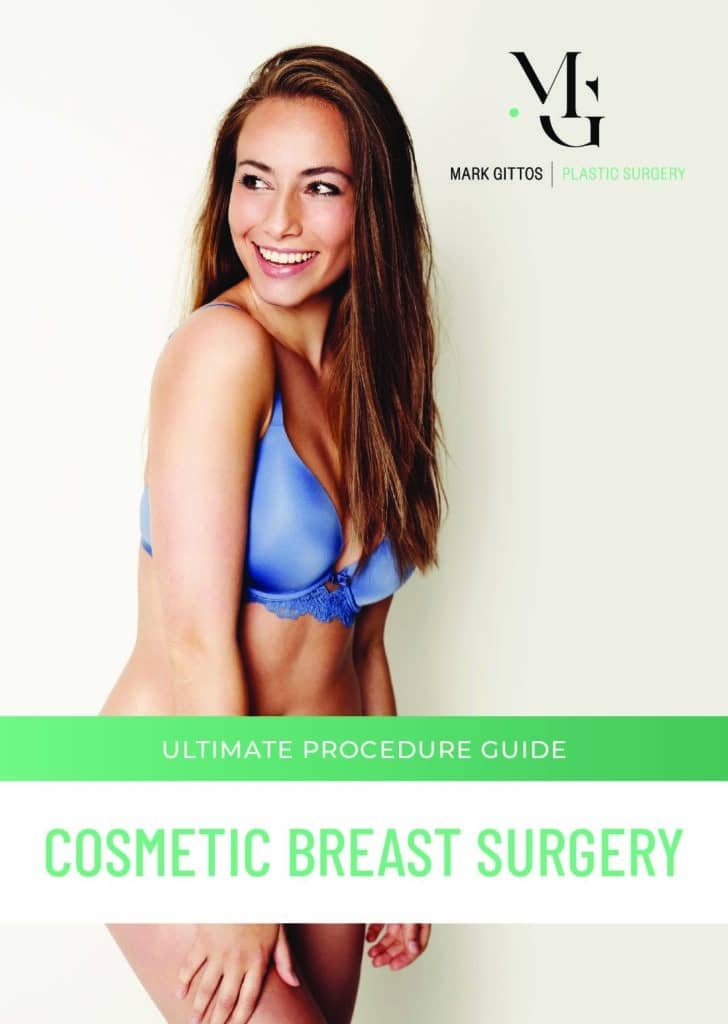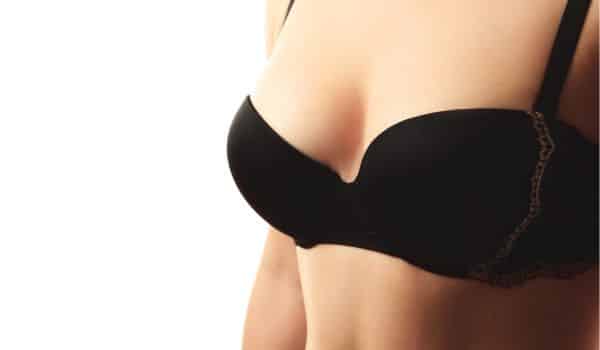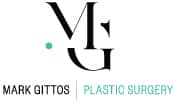Aesthetics of the Breasts
In a world where beauty standards constantly evolve, the quest to understand the ideal aesthetics of the female breast remains a topic of intrigue and debate. From ancient sculptures to modern-day media portrayals, breasts have always held a significant place in the representation of femininity and beauty. But what truly defines the “best” or “perfect” breasts? Is it their size, shape, symmetry, or perhaps something more intangible? As we discuss this topic, we’ll explore the scientific, historical, and personal perspectives on breast aesthetics. Through this exploration, we aim to shed light on the multifaceted nature of beauty and how societal norms, individual preferences, and even medical advancements play a role in shaping our perceptions.
Dr Mark Gittos is a renowned plastic surgeon known for his expertise in breast surgery. With clinics in both Auckland, New Zealand, and London, UK, he has garnered a reputation for delivering exceptional results to his patients. His international presence showcases his commitment to the field and his dedication to offering top-tier surgical procedures across two continents. Dr Gittos’ vast experience and meticulous approach make him a sought-after name in the realm of breast surgery.
Download Dr Mark Gittos’ Guide to Cosmetic Breast Surgery

Science and Breast Aesthetics
The allure of breast aesthetics transcends mere societal standards and delves deep into the realms of biology, psychology, and cultural influences. This fascination isn’t a modern phenomenon but has historical roots, with each era having its own definition of the “ideal” breast. However, recent scientific research has provided a more nuanced understanding of what makes breasts aesthetically pleasing.
Anatomy and Morphology: The study titled “Aesthetic Characteristics of the Ideal Female Breast” from NCBI offers valuable insights into the anatomical features associated with attractiveness. It’s not just about size; the shape, especially the projection of the breast, plays a pivotal role. The research analysed both two-dimensional photographs and three-dimensional imaging, emphasising that a projected breast shape correlates significantly with increased perceptions of attractiveness. Furthermore, the study highlighted that among the highest-scoring subgroup, the ideal aesthetics included a moderate size, a linear or convex upper pole slope, and a convex lower pole. The ratio of upper to lower pole volume distribution, approximately 55:45, was also deemed ideal.
Crowdsourced Perceptions: In the digital age, crowdsourcing has emerged as a powerful tool to gauge public opinion. A study sourced from PubMed utilised this approach, seeking opinions on how closely patient breasts matched ideal breast characteristics. The findings were intriguing. Breast projection proportion, as also emphasised in the NCBI study, had the highest correlation with perceptions of aesthetic beauty. This validation from a diverse group of individuals underscores the universal appeal of certain breast characteristics.
Psychological and Societal Interplay: While biology and anatomy provide a foundation, psychology and societal norms add layers of complexity to our perceptions. Symmetry, proportion, and familiarity are deeply ingrained psychological markers of beauty. Culturally, media portrayals, fashion trends, and even regional preferences can influence what’s deemed attractive. For instance, while some cultures might prioritise fullness, others might emphasise perkiness or natural droop.
Historical Evolution of Breast Beauty
The human fascination with breasts as symbols of femininity, nurturing, and beauty is as old as civilization itself. Throughout history, the perception of the ideal breast has been a reflection of societal values, cultural norms, and even economic conditions.
In the ancient world, the representation of breasts was deeply symbolic. The voluptuous depictions in Palaeolithic and Neolithic art were not just aesthetic choices; they symbolised fertility and the nurturing aspect of womanhood. Statues from these periods, with their exaggerated breast sizes, were likely revered as symbols of motherhood and abundance.
The Egyptians, with their sophisticated civilization, had a more nuanced approach. For them, the ideal was not necessarily about size but about firmness and position. Hieroglyphs and sculptures from this era often showcase women with perky, upright breasts, symbolising youth and vitality.
The Ancient Greeks and Indian dynasties, on the other hand, were all about harmony and proportions. Greek sculptures, like the famous Venus de Milo, showcase breasts that are modest in size but perfectly proportioned to the body. In ancient Indian art, the emphasis was on the roundness and fullness of the breast, often linked to sensuality and allure.
Fast forward to the 20th century, and the dynamics changed dramatically. The 1960s saw the advent of breast augmentation, a procedure that would revolutionise the concept of breast beauty. The latter half of the century, influenced by pop culture and media, saw a surge in the preference for larger breasts. Shows like Baywatch and celebrities of the era set new standards for what was considered attractive.
However, as we entered the digital age, with its rapid dissemination of information and global interconnectedness, the ideals of beauty became more diverse. Today, there’s a broader understanding and acceptance of different shapes and sizes. The focus has shifted from a singular ideal to a more inclusive view that celebrates diversity.
Anatomy and Aesthetics of Breasts

The female breast, often celebrated in art and culture, is a complex structure with both functional and aesthetic significance. Its anatomy goes beyond what meets the eye, and its aesthetics are influenced by a myriad of factors, both intrinsic and extrinsic.
At the core of breast anatomy are the mammary glands, responsible for milk production, nestled within layers of fatty tissue that give the breast its size and shape. The skin, with its elasticity, plays a pivotal role in the breast’s contour and firmness. The nipple and areola, often overlooked, are central to the breast’s aesthetic appeal. Their size, position, colour, and even texture can significantly influence the overall appearance of the breast .
But the perception of the “perfect” breast is not solely based on anatomy. It’s a blend of biology and societal standards. For instance, while some might prefer breasts with a teardrop shape, emphasising a fuller lower pole, others might lean towards a rounder appearance. Symmetry, often hailed as a hallmark of beauty, plays a crucial role in breast aesthetics. Yet, it’s essential to note that perfect symmetry is rare, and slight variations are natural.
The role of the nipple in breast aesthetics is profound. Its position, pointing slightly upwards, can give the breast a youthful appearance. The size and colour of the areola, the circular region surrounding the nipple, can also impact perceptions of beauty. Factors like genetics, ethnicity, ageing, and hormonal changes can influence these characteristics.
In today’s world, with advancements in cosmetic surgery, the boundaries of breast aesthetics are continually expanding. Procedures like breast augmentation, reduction, lifts, and nipple corrections offer individuals the chance to align their physical appearance with their desired aesthetic. However, at the heart of this is the understanding that beauty is diverse. What might be ideal for one might not be for another.
In essence, the aesthetics of breasts are a confluence of anatomy, personal preferences, societal standards, and individual experiences.
Surgery to Get the “Perfect” Breasts
The quest for physical perfection is as old as humanity itself. From ancient civilizations using rudimentary techniques to enhance beauty to today’s cutting-edge surgical procedures, the desire to modify and enhance one’s appearance has been a constant. In the field of breast aesthetics, surgery has emerged as a powerful tool, allowing individuals to achieve their desired look, be it for cosmetic reasons or medical necessities.
Breast augmentation, one of the most popular cosmetic surgeries worldwide, has seen significant advancements over the decades. From the types of implants used (saline vs. silicone) to the techniques employed, the procedure has become safer and more customisable. It’s not just about increasing size; it’s about achieving a shape and feel that aligns with an individual’s desires and body type.
Breast reduction, on the other hand, addresses the challenges faced by those with overly large breasts. Issues like back pain, posture problems, and skin irritations can be alleviated, offering not just an aesthetic solution but a functional one.
Breast lift caters to those looking to combat the effects of gravity, ageing, or significant weight loss. By removing excess skin and tightening the surrounding tissue, breasts can be given a more youthful and perky appearance.
Beyond these primary procedures, there are surgeries focused on the nipple and areola. Nipple reductions, corrections of inverted nipples, and areola resizing are all options available to those looking to refine these crucial aspects of breast aesthetics.
It’s essential for individuals to be well-informed, understanding the potential risks and rewards. Ethical considerations also come into play, especially when considering surgeries at a young age or under societal pressures.
FAQs about Breasts

What is the ideal female breast?
- The concept of the “ideal” female breast is subjective and varies across cultures, time periods, and individual preferences. Scientifically, studies have highlighted certain characteristics, such as a projected breast shape and a specific ratio of upper to lower pole volume distribution, as being associated with perceptions of attractiveness. However, it’s essential to understand that beauty standards evolve, and what might be considered ideal in one culture or era might differ in another. Ultimately, the ideal breast is one that an individual feels most comfortable and confident with.
What are the most common breast shapes?
- Breasts come in various shapes, each with its unique characteristics. Some of the most common breast shapes include round (equally full at the top and bottom), teardrop (slightly fuller at the bottom), bell shape (slender at the top and rounding at the bottom), side set (wide space between breasts), slender (narrow and elongated), and asymmetric (one breast is larger than the other). It’s worth noting that most women might not fit perfectly into one category, and slight variations are natural.
What is the most attractive breast size?
- The perception of the most attractive breast size is influenced by societal norms, cultural preferences, and individual tastes. Historically, these preferences have fluctuated, with different eras and cultures valuing different sizes. Today, with the influence of media and fashion, there might be certain popularised standards. Attractiveness is subjective, and what might be deemed attractive by one person might differ for another. It’s essential for individuals to prioritise their comfort and well-being over societal standards.
What are the characteristics of the breast?
- Breasts are complex anatomical structures comprising several components. They consist of mammary glands, responsible for milk production, nestled within layers of fatty tissue that determine their size and shape. Ligaments and connective tissue provide support, while the skin covers the external surface. The nipple and areola, the darker circular region surrounding the nipple, are central to the breast’s aesthetic and functional aspects. Hormonal changes, genetics, and ageing can influence the characteristics and appearance of the breasts.
What are the options for breast surgery?
- Breast surgery offers a range of procedures tailored to individual needs and desires. Some of the most common options include breast augmentation (enhancing the size and shape using implants), breast reduction (removing excess tissue to reduce size), breast lift (raising and firming the breasts by removing excess skin), and breast reconstruction (rebuilding the breast after mastectomy or injury). Additionally, surgeries like nipple reduction, correction of inverted nipples, and areola resizing are available for more specific modifications. It’s crucial for individuals to consult with a plastic surgeon to understand the best options for their unique circumstances.
Further Reading about Breast Surgery with Dr Mark Gittos
- Read Dr Gittos’ Blog about What Is The Best Breast Implant Position – Above or Below?
- Read Dr Gittos’ Blog about What Is The Best Breast Implant Shape?
- Read Dr Gittos’ Blog about How to Get Perky Breasts
- Read Dr Gittos’ Blog about Can you tell Fake Boobs vs Real Boobs?
- Read Dr Gittos’ Blog about How to Get Bigger Boobs
Medical References and Studies about Breasts
- Aesthetic Characteristics of the Ideal Female Breast – PMC
- Validation of Ideal Breast Characteristics With Breast Augmentation Patients
- One-stage augmentation combined with mastopexy: aesthetic results and patient satisfaction
About Dr Mark Gittos FRACS (Plast) – New Zealand Plastic Surgeon
Practice locations in Herne Bay Auckland, Northland and Bay of Plenty – Kerikeri, Whangarei, New Plymouth & Tauranga
Dr Mark Gittos is a leading Specialist Plastic Surgeon and operates a practice in Herne Bay, Auckland and in the UK. The practice focuses on both surgical and non-surgical procedures, each designed to help restore, improve or change a physical characteristic or problem. The first step in every case is to talk through your personal requirements and explore all the options, before deciding on the most effective solution.
Dr Mark Gittos offers high quality, natural-looking cosmetic surgery results and is highly experienced in Breast, Body and Face Surgery having performed over 4000 Surgeries in the last 26 years. With worldwide expertise Dr Gittos is an expert in breast, face and body surgery for men & women.
Naturally, before any treatment is begun, we will explain clearly the advantages and risk factors; so that you have the information you need to make an informed decision that is best for you. Visit the practice to find out more.

NEXT STEPS
Please NOTE: Dr Gittos only performs surgery on non-smoker patients with a BMI less than 30. To check your BMI please visit the NZ Heart Foundation website. For help giving up smoking before surgery visit the Smoke Free website
Do your Research
- Read the Website and Blogs relevant to your procedure
- Browse our Frequently Asked Questions including how to choose a Surgeon for your procedure
- Download and read the FREE Guides to Surgery
What to Bring to your Plastic Surgeon Consultation
- Bring a friend or relative to help discuss the information and your choices
- Take lots of notes and read the documents provided thoroughly
- Dress in simple clothes as you may need to undress for examination
- Bring your medical referral and any relevant medical documents or test results
Book your Initial Surgery Consultation
- A Referral from your GP or specialist is helpful but NOT essential – you can have a consultation without a GP Referral
- Email us or Call on 09 529 5352 to arrange your surgeon consultation appointment.
- Book a consultation with Dr Gittos by paying the Consultation Fee – $350 incl GST
Traveling for Surgery? – Consider post-surgery luxury recovery in a Hotel with LuxeCare
Please contact us to arrange to book a consultation with our Specialist Plastic Surgeon or to speak with our Patient Care Advisor.
Send an enquiry form today or phone 09 529 5352 during Clinic Hours
